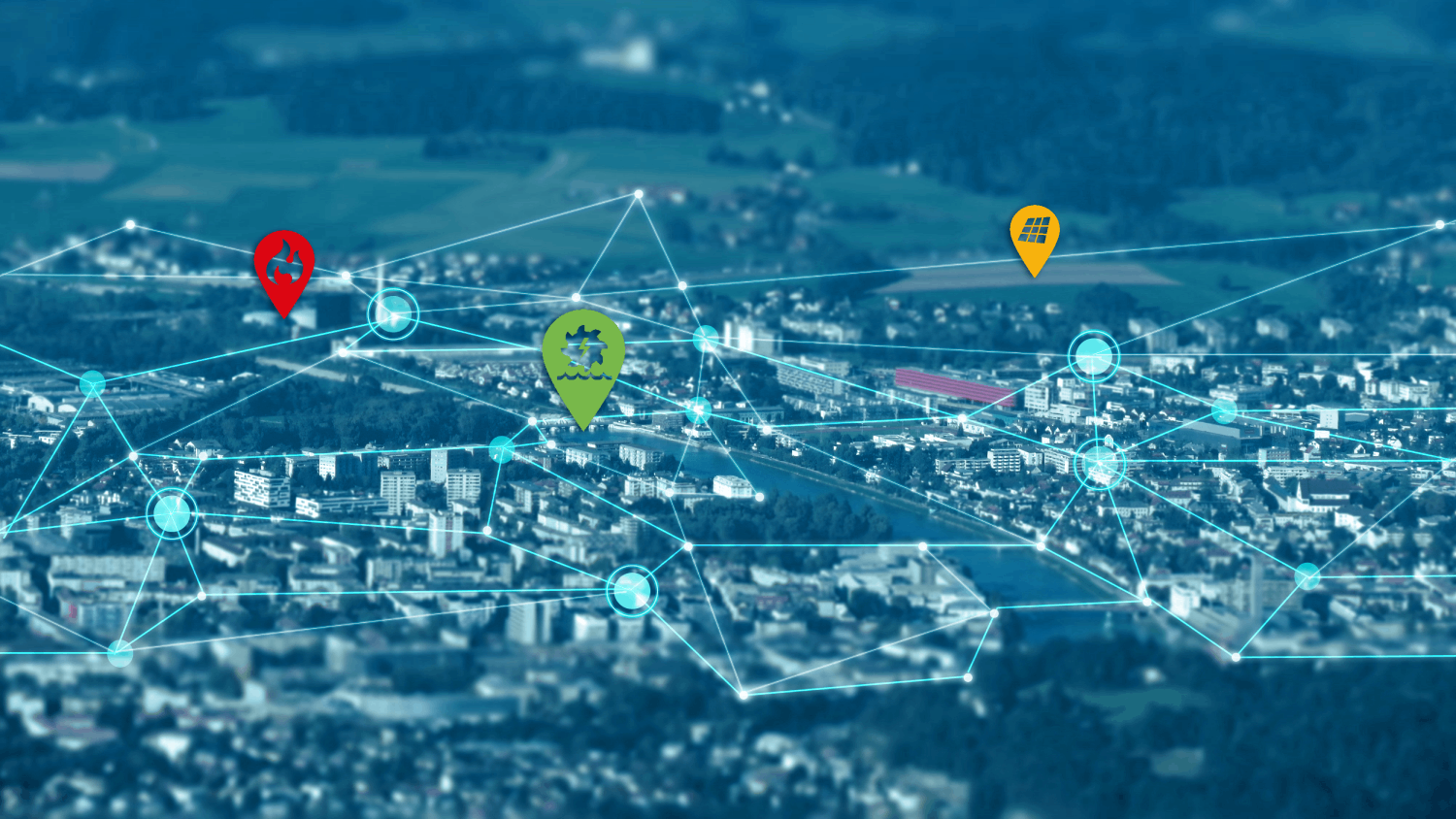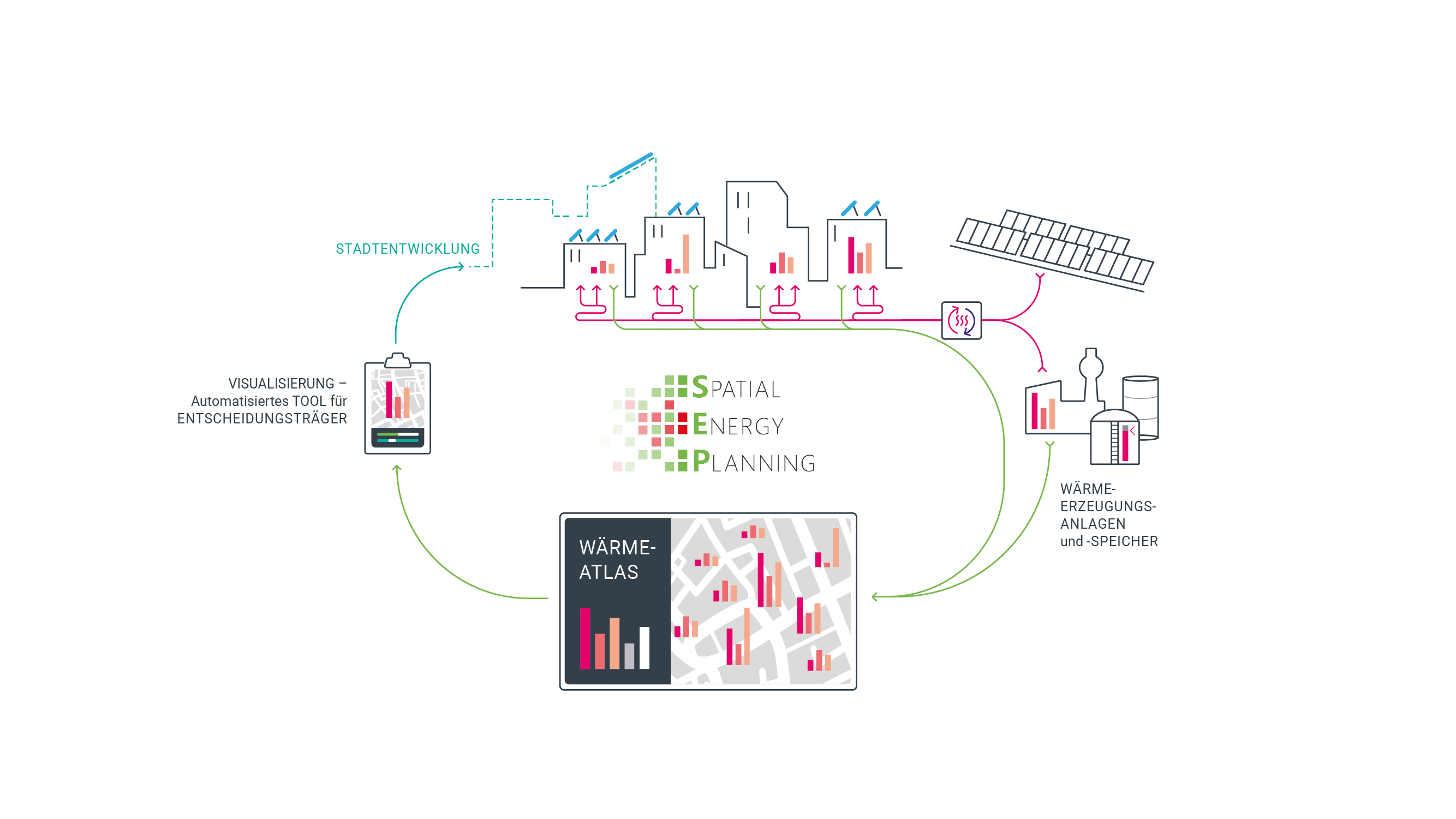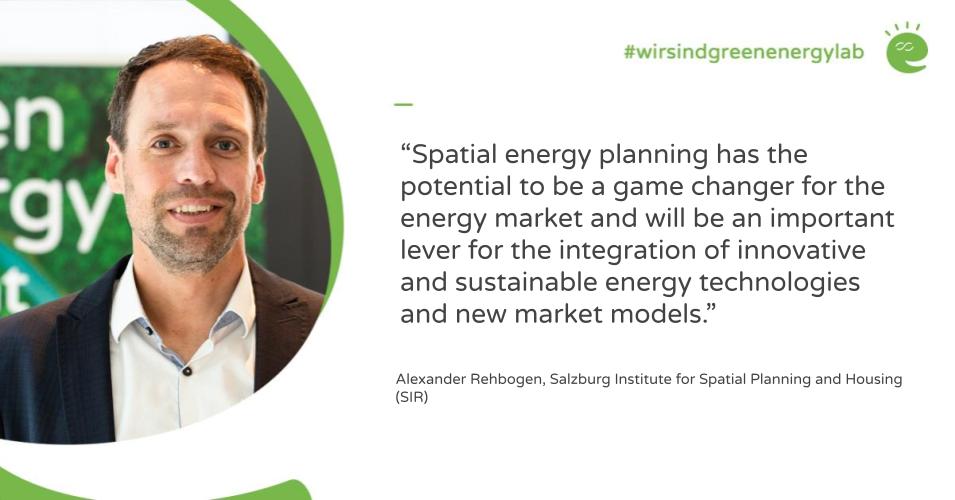Spatial Energy Planning
Spatial energy planning for the new heating age
This research project has been completed. Access the Spatial Energy Planning I Results Fact Sheet or download the Publishable Final Report (german only) here.
The aim of the project “Spatial Energy Planning for the Heat Transition” (SEP I) was to anchor the topic of energy in spatial planning instruments at state level and to create all the necessary foundations to make these available to local authorities at state, regional and municipal level in a wide variety of applications.
The innovative content and unique selling point of the results is the use of modeled data at building level instead of statistical, aggregated data. In order to achieve the best possible results, harmonized methods from years of research by major Austrian research institutions were brought together and validated with thousands of real data.
HEATatlas as a central element
The HEATatlas provides the complex energy relationships, e.g. potentials of renewable energy sources, infrastructure and dynamic heating and cooling demands in high spatial resolution, thus enabling long-term energy and infrastructure planning. Based on this, automated analyses were developed for defined administrative processes at various spatial levels – from energy strategy and monitoring to site development. The following points are fundamental to the successful implementation of spatial energy planning:
- Low effort and competence requirements for users in the local authorities
- Legal coverage of data and applications with regard to data protection
- Efficient provision through digital systems and automatically generated analyses
- Comparability of results through standardized methods
- Continuity and quality assurance through standardized data sources
- Openness to technology to ensure flexible planning tools
Pilot regions Vienna, Styria and Salzburg
In order to achieve the climate targets in the area of heat supply, regional authorities at all levels are required in the sense of multi-level governance, whereby the federal states play a key role, as in addition to the legal framework (building law, regional planning law), the administration of the data sources and the provision of the data and applications via the state-owned GIS systems are in the hands of the state governments. The cooperation of the provinces of Vienna, Styria and Salzburg in the project has resulted in a system that is also scalable to the other provinces. The first follow-up project in this regard was the creation of the “Masterplan Wärme Rheintal/ Walgau” in cooperation with the state of Vorarlberg.
HEATapp for active citizen participation
Decarbonizing the heating supply is absolutely necessary to achieve the climate targets. Leaving the management of this transition to the market is not sufficient, given the trends, as switching heating systems can have long-term, undesirable lock-in effects. A coordinated, planned use of renewable resources for future energy supply is essential. This can only succeed if it is implemented in established planning processes and taken into account from the outset.
The availability of data at building level also offers citizens the opportunity to find out about the use of renewable energy potential, e.g. on their own property, via the HEATapp and thus take an active role in the energy transition. In addition, the developed system enables standardized monitoring of the implemented measures.
Links:
You are currently seeing a placeholder content of YouTube. To access the actual content, click on the button below. Please note that data will be passed on to third-party providers.
The following model solutions were being developed in the Spatial Energy Planning project:
DATA BASIS FOR ENERGY PLANNING
PLANNING PROCESSES
HEAT-ATLAS
HEAT-APP
Media reports on the project
Spatial energy planning for the heating transition – energy innovation austria
The heating market is undergoing a transformation. Technological innovations, new building regulations and targeted subsidies are forcing the further development and use of renewable technologies in the heating sector and the gradual replacement of fossil fuel systems.
To the articleSpatial energy planning as a climate saver
Spatial energy planning is one of the key factors for cities and municipalities on the way to smart urban development. What it can really contribute to the energy transition and climate protection, and above all by what means, was discussed on January 29, 2020 at the invitation of ÖROK with experts and representatives from all federal provinces at the Urania in Vienna.
To the articleConcerted energy transition versus renewable anarchy – TGA Fachmagazin
How can the heating transition succeed? The decisive factor is spatial coordination, which ensures that the most suitable technology is used in each location and that this also takes the electricity sector into account.
To the article



